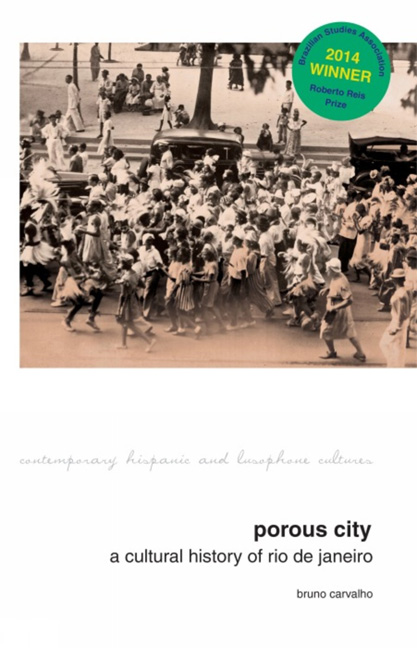Book contents
- Frontmatter
- Contents
- List of Maps
- List of Figures
- A Note on Translation
- Preface
- Introduction: In Search of Things Past: Mapping Rio
- 1 At the Centre of an Imperial Capital: Swamps, Yellow Fever, and Gypsy Parties
- 2 A Master on the Periphery of a Periphery: Popular Music, Streetcars, and the Republic
- 3 Beyond the Belle Époque: On the Border of a ‘Divided City’
- 4 Afro-Jewish Quarter and Modernist Landmark
- 5 Writing the ‘Cradle of Samba’: Race, Radio, and the Price of Progress
- 6 ‘It's (Mostly) All True’: The Death of a Neighbourhood and the Life of Myths
- Conclusion: The Future Revisited: Where Has the Past Gone and Where Will it Go?
- Acknowledgements
- Works Cited
- Index
4 - Afro-Jewish Quarter and Modernist Landmark
- Frontmatter
- Contents
- List of Maps
- List of Figures
- A Note on Translation
- Preface
- Introduction: In Search of Things Past: Mapping Rio
- 1 At the Centre of an Imperial Capital: Swamps, Yellow Fever, and Gypsy Parties
- 2 A Master on the Periphery of a Periphery: Popular Music, Streetcars, and the Republic
- 3 Beyond the Belle Époque: On the Border of a ‘Divided City’
- 4 Afro-Jewish Quarter and Modernist Landmark
- 5 Writing the ‘Cradle of Samba’: Race, Radio, and the Price of Progress
- 6 ‘It's (Mostly) All True’: The Death of a Neighbourhood and the Life of Myths
- Conclusion: The Future Revisited: Where Has the Past Gone and Where Will it Go?
- Acknowledgements
- Works Cited
- Index
Summary
De fato este salão de sangues misturados parece o Brasil …
Há até a fração incipiente amarela
Na figura de um japonês.
O japonês também dança maxixe:
Acugêlê banzai!
[In fact this dance hall of mixed bloods resembles Brazil … /
There is even the incipient yellow fraction / In the figure of a
Japanese. / The Japanese also dances maxixe: / Acugêlê banzai!]
Manuel Bandeira, ‘Não sei dançar’ (I Can't Dance), LibertinagemIn 1930, George Gershwin introduced a book on Tin Pan Alley by stating that ‘in a word, [it] is a unique phenomenon, and there is nothing in any other country of the world to compare with it’ (Goldberg 1930: vii). The great composer and pianist, né Jacob Gershowitz, was quite correct when one considers the number of music publishers and the financial sums circulating in the Manhattan district. At the same time, something comparable though less widely known could be found in Brazil's capital, centred on the Cidade Nova's main public square, the Praça Onze. If Tin Pan Alley represented a pinnacle of the impressive synthesis between Jewish musicians and producers with the Afro-American inflected sounds of cakewalk, ragtime, jazz, and blues, one could say that in Rio de Janeiro it is as if frequenters of New Orleans's Congo Square and New York City's Jewish or Italian immigrants all shared the same buildings, public meeting places, occasions to dance.
Lima Barreto's Numa e a Ninfa goes to great lengths to portray a Cidade Nova inhabited not only by blacks but by newly arrived Europeans, above all Italians (‘valiant Neapolitans’), yet also Portuguese and Russians. The ‘doctor’, Bogóloff, a Russian émigré, is one of the novel's major characters, living with Lucrécio in his modest Cidade Nova house and rising in the ranks of Brazil's republican technocracy on account of his pseudo-scientific projects and appearance. To be white suffices, implies Lima Barreto. His mulato protagonist, on the other hand, hints at the arrival of a new immigrant group that would add yet another layer to the socio-cultural landscape of the neighbourhood. Upon hearing from his wife, that Mr Antunes, owner of the nearby small general store, would no longer sell to them on credit due to unpaid debts, Lucrécio loses his temper.
- Type
- Chapter
- Information
- Porous CityA Cultural History of Rio de Janeiro (from the 1810s Onward), pp. 104 - 135Publisher: Liverpool University PressPrint publication year: 2013

